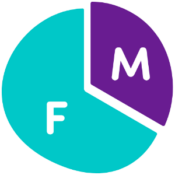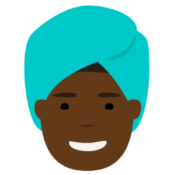
Despite the stereotype that eating disorders only affect girls or women, about 1 in 3 people impacted by an eating disorder are male.
Anorexia nervosa, bulimia nervosa, and binge eating disorder are major eating disorders requiring diagnosis by a mental health professional. All three of these show very similar symptoms in both sexes and are offered similar forms of treatment.

There are many subclinical eating disorders that don’t meet the exact criteria for the diagnosis of a major eating disorder and these are called Other Specified Feeding and Eating Disorders (OSFED). These affect both males and females equally.
Avoidant/Restrictive food intake disorder (ARFID) is when someone avoids certain foods, limits how much they eat or both. They can be more common in individuals who have sensory issues, or subsequent to negative experiences with food, and can be more common in males. Body Dysmorphic Disorder or muscle dysmorphia is more common in males and will be triggered by significant body dissatisfaction with often unattainable ideals of being lean and muscular.
All treatments will consider the person, biological and cultural factors, and environmental triggers. All eating disorders respond to early diagnosis and intervention.




